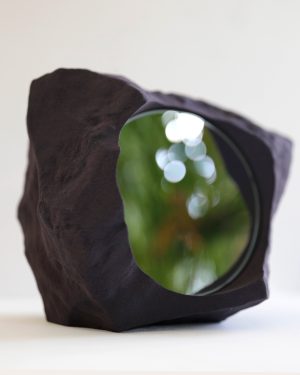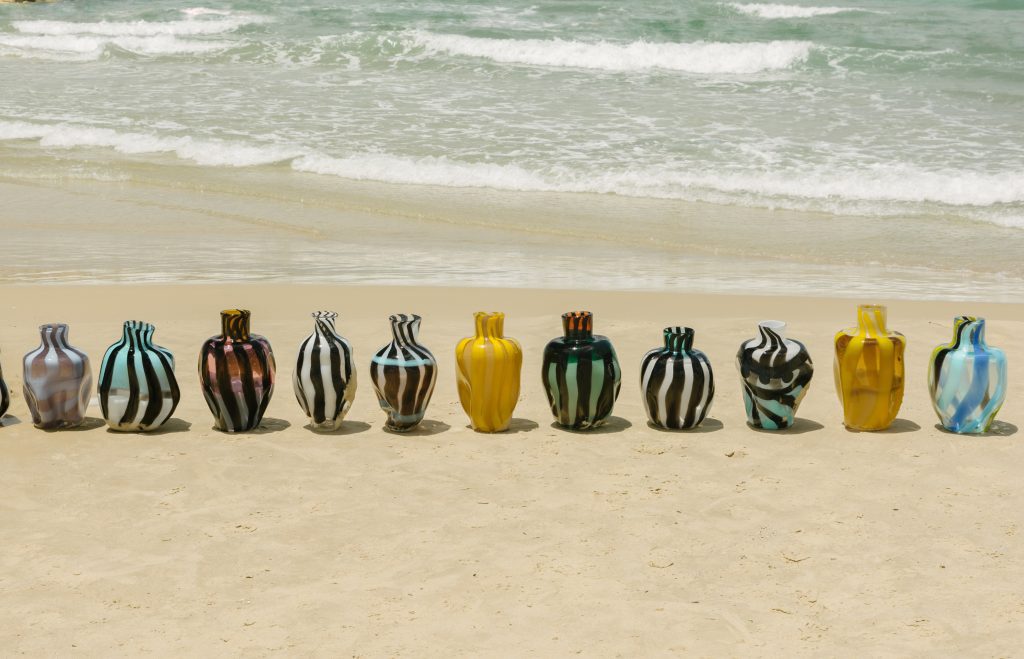

4 Design Studios Addressing Biomimicry in Their Work
In honor of Earth Month, we spotlight four innovative designers who lead the way in exploring biomimicry and its incredible potential in the world of design. This innovative approach draws inspiration from the intricate designs and processes observed in the natural world. But biomimicry is more than aesthetic imitation; it is a profound homage to the wisdom and ingenuity of the Earth’s ecosystems and natural processes. By learning from nature’s remarkable adaptations, we can unlock innovative solutions to pressing environmental challenges. Read on to uncover the ingenious wonders of biomimicry and its vast potential to shape a more sustainable future for our planet.
What is Biomimicry?
Biomimicry is the practice of drawing inspiration from nature’s patterns, systems, and processes to solve human design challenges. It involves emulating the strategies and forms found in the natural world to create innovative and sustainable designs. By studying how organisms adapt and thrive in their environments, designers can develop solutions that are efficient, resilient, and well-suited to their intended purpose. Biomimicry in design harnesses the power of evolution and ecological principles to create products, buildings, and systems that are in harmony with nature, offering both functional and aesthetic benefits while minimizing environmental impact.




Examples of Biomimicry in Design
Biomimicry offers fascinating insights into the efficiency and adaptability of natural systems, inspiring innovative solutions across various fields. One remarkable example is the Eastgate Centre in Zimbabwe, which draws inspiration from termite mounds and the large ears of jackrabbits to regulate temperature without traditional air conditioning, resulting in 35% less energy consumption compared to conventional buildings in the same city.
Additionally, biomimetic wind turbines, inspired by the schooling behavior of fish, have been developed by Caltech researcher John Dabiri, who was curious how large schools of fish could swim so closely together without interfering with one another. These turbines imitate the vortices created by individual fish to operate efficiently in close proximity, potentially increasing wind energy generation tenfold compared to traditional horizontal turbines. These examples highlight the transformative potential of biomimicry in addressing complex challenges and advancing sustainable technologies.


Pioneers of Biomimicry in Design
Olle Sahlqvist


Olle Sahlqvist’s Biomimicry Furniture Design project serves as a poignant reminder of the urgent need to address the climate crisis by reconnecting with nature. Through his innovative use of mycelium and organic materials, Sahlqvist not only champions sustainability but also prompts us to reflect on our relationship with the natural world, fostering empathy and a sense of responsibility towards its preservation.










Olle’s creations, unveiled at the Ex-Works 2022 exhibition, go beyond material imitation; they often cleverly mimic the shapes and appearances of natural phenomena, from the protective qualities of bark to the structural intricacies of fungi. Through his work, Sahlqvist demonstrates how design can beautifully integrate nature’s wisdom, offering both practical solutions and aesthetic beauty inspired by the world around us.
Drag And Drop


The studio Drag And Drop epitomizes the fusion of technology and craftsmanship, seamlessly blending cutting-edge digital fabrication techniques with time-honored craftsmanship traditions. Their innovative lighting solutions, crafted from a proprietary blend of wood fibers and biodegradable materials, not only showcase their technical prowess but also underscore a deep commitment to sustainability and quality.










By leveraging the power of technology alongside traditional techniques, Drag and Drop demonstrates how environmentally conscious design can be both innovative and visually captivating, offering a glimpse into a future where sustainability and aesthetics naturally harmonize.
Sabrina Merayo Nuñez


Sabrina Merayo Nuñez’s innovative explorations delve into the fascinating realm of biomaterials and interactive sculptures, shedding light on the intricate interplay between art, design, and the natural world. Through her groundbreaking work, which utilizes collagen-based bioplastics, Nuñez showcases the boundless potential of biomimicry in design.










Nuñez forges profound connections with the biological and technological networks that define our existence through captivating interactive, radical light sculptures. Her emphasis on the dynamic interfaces between nature, human creativity, and technology encourages us to contemplate the material essence of our being and the profound transformative influence of thoughtful design.
Kamilla Csegzi


Kamilla Csegzi’s multidisciplinary work encompasses architecture, installations, and object design, all grounded in a profound reverence for natural processes and the interconnectedness between humans and the environment. Csegzi explores materials and phenomena such as air movement, growth, and decay.










Kamilla’s designs symbolize transformation and regeneration, notably demonstrated in her pioneering use of mycelium. Her approach serves as a testament to the power of relinquishing control and fostering collaboration with nature, resulting in designs that are not only sustainable but also infused with spirit and vitality.
Conclusion
Olle Sahlqvist, Drag And Drop, Sabrina Merayo Nuñez and Kamilla Csegzi represent the cutting edge of biomimicry in design, a field that not only seeks to replicate the beauty and functionality of nature but also aims to foster a sustainable and harmonious relationship between human creations and the natural world. As we reflect on the significance of Earth Month, their work serves as a powerful reminder of the potential of design to contribute to environmental stewardship and to reimagine our future in alignment with the principles of nature. Through such endeavors, we are reminded that the path to sustainability is not one of renunciation but of inspiration, drawing from the endless well of creativity that nature offers.
-

 Stone Mirror No. 4 *blackberry – Prototype€559 incl. tax
Stone Mirror No. 4 *blackberry – Prototype€559 incl. tax -

 Sun V3-b – 3d Printed Sand Lamp€4.416 incl. tax
Sun V3-b – 3d Printed Sand Lamp€4.416 incl. tax -
Piece on sale

 Sun V2-b – 3d Printed Wall Lamp€7.561 incl. tax
Sun V2-b – 3d Printed Wall Lamp€7.561 incl. tax -

 Blueprint – Ash Wood Bench€6.250 incl. tax
Blueprint – Ash Wood Bench€6.250 incl. tax -
Piece on sale

 Sun Vxs.04 – Contemporary Wall Lamp In Textured Quartz Sand€1.600 incl. tax
Sun Vxs.04 – Contemporary Wall Lamp In Textured Quartz Sand€1.600 incl. tax -

 Flax – Biodegradable Ceiling Lamp€126 incl. tax
Flax – Biodegradable Ceiling Lamp€126 incl. tax -

 Cherry Picker – Mycelium Coffee Table€3.375
Cherry Picker – Mycelium Coffee Table€3.375 -

 Sun V1 – 3d Printed Sand Wall Light€9.632 incl. tax
Sun V1 – 3d Printed Sand Wall Light€9.632 incl. tax -

 Sun V2 – 3d Printed Wall Lamp€5.987 incl. tax
Sun V2 – 3d Printed Wall Lamp€5.987 incl. tax





